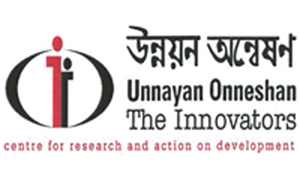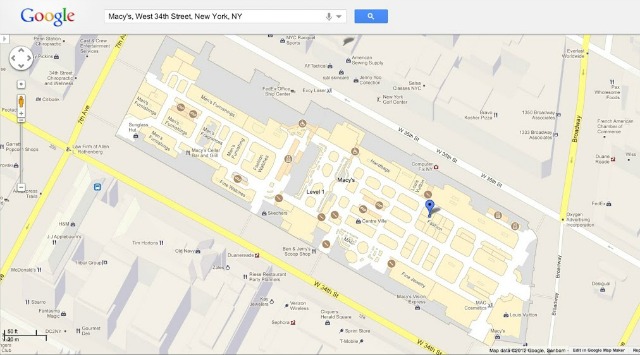 The Unnayan Onneshan, an independent multidisciplinary think-tank, in its October issue of Bangladesh Economic Update reveals that the rate of growth in remttance has decreased over the years, despite increased volume of inflow.
The Unnayan Onneshan, an independent multidisciplinary think-tank, in its October issue of Bangladesh Economic Update reveals that the rate of growth in remttance has decreased over the years, despite increased volume of inflow.
The Unnayan Onneshan also notes that inflow of remittance in the current fiscal year exhibits an erratic trend, going down in a month while increasing in the other, suggesting no definitive trend. The inflow of remittance in the months of July, August, September and October in 2012 are USD 1201.15 million, 1178.65 million, 1171.90 million, and 1453.6 million respectively. The receipt of remittance, however, in October has peaked as usual, coinciding festivals of Eid-ul-Adha and Durga Puja.
“The future flow of remittance is challenged by the existing structural problems such as increase in less-skilled labour migration as opposed to skilled and professionals and failure in adding new markets,” reasons the Unnayan Onneshan.
The think-tank also alerts that well-thought out strategy on remittance is warranted not only because of its sustained contribution towards growth, and role in maintaining overall balance, of the economy, but also because of depressed demand arising out of political instability in some Middle Eastern countries, the region receiving most of the temporary migrant workers, the prohibition in issuance of visa in U.A.E., and the recent spat between recruiting agencies and the government.
Referring to increased share of remittance to gross domestic product (GDP) over the years, the Unnayan Onneshan, however, says that the incremental rate of growth is following a downward trend after FY 2004-05. In FY 2011-12, the GDP was BDT 9147.80 billion and remittance was 1018.83 billion, which is 11.14 percent of GDP, a 0.72 percent higher than that of FY 2010-11. The incremental rate of growth of remittance as percentage of GDP has been decreasing (-0.53 percent in FY 2010-11and 0.10 percent in FY 2009-10).
Demystidying the increased volume of remittance, the Unnayan Onneshan says that the amount of remittance that the country receives per year is alluring when calculated in Bangladeshi currency due to depriciation of local currency against US dollars. Remittance in terms of dollar increased by 10.24 percent while remittance in terms of BDT increased by 23.74 percent in FY 2011-12. The amount of remittance in FY 2011-12 was BDT 1018.83 billion which was 12.84 billion in USD while the inflow in 2010-11 in BDT was 830.05 billion, which was 12.84 billion in USD, reflecting a downward adjustment of 6.48 percent in FY 2011-12 and 6.34 percent in FY 2010-11 against US dollars.
The research organisation cautions that no new notable addition has been made to the existing list of destination after FY 2001-02. In addition, political upheavals, particularly in the Middle Eastern region have squeezed the demand for labour. Moreover, the U.A.E. has banned issuing new visa for Bangladeshis in August 2012 while Saudi Arabia has prohibited new labour visa as well, the research organisation adds.
“As a consequence, inflows from most of the countries of the Middle Eastern regions have seen a downward trend in the begining of current the fiscal year. The receipt of remittance from the two major Middle Eastern countries, Kuwait and K.S.A. have squeezed respectively by USD 12.82 million and USD 10.82 million in the month of August, 2012 than those of July, 2012,” notes the Unnayan Onneshan.
In August of FY 2012-13, the total number of labour migration declined to 0.04 million which was 30.20 percent lower than that of the first month of the current fiscal year. During the first two months of the current fiscal year (2012-13), total exports of manpower was 0.11 million which was, however, 10.08 percent higher than that of the same period of FY 2011-12, adds the research organization.
In calendar year 2011, out of 0.57 million labour migration, 54.39 percent were less-skilled, 5.06 percent were semi-skilled, 40.34 percent were skilled and only 0.21 percent were professionals while the share of less-skilled, skilled and semi-skilled labour migration were 73.52, 23.19 and 3.19 percent respectively in the previous calendar year of 2010.
The GDP grew with the increased flow of remittance till FY 2003-04. After FY 2003-04, the growth rate of GDP decreased due to the higher rate of inflation, though remittance increased. The incremental rate of growth of remittance as percentage of GDP was -0.53 percent and 0.10 percent respectively in FY 2010-11 and FY 2009-10, from 1.38 percent in 2005-06.
The think-tank states that increase in the remittance helped the current account balance to remain positive, despite increased trade deficit and deficit in services over the years. In FY 2011-12, current account balance showed a positive trend after observing a decling trend in the previous fiscal year which increased by 84.18 percent. In the mean time, trade deficit and service deficit increased by only 2.38 and 8.02 percent respectively whereas remittance increased by 10.24 percent in FY 2011-12.
In spite of increase in remittance over the years, the Unnayan Onneshan observes that reserves are increasing at a decreasing rate due to the surge in import bills for quick rental power plants. In FY 2011-12, foreign exchange reserve was USD 10364.4 million, which was 5.01 percent lower than that of the previous fiscal year due to the augmented import bills for the quick rental power plants, despite the 10.24 percent growth rate of remittance.
At the end of October 2012, foreign exchange reserves have reached at the record of USD 12.31 billion because of surge in inflow of remittance coinciding Eid-ul-Adha and Durga Puja, purchase of US dollars by the Bangladesh Bank in the last few months and drop in import of capital machineries due to tightened monetary policy.
The growth in settlement of letters of credit (LCs) or actual import payments for capital machinery and petroleum during July-August 2012 registered a negative growth of 17.45 and 5.73 per cent, compared to those of 44.23 and 130.48 per cent growth in the same period of the previous fiscal year (i.e. July and August of 2011).
Source: Energybangla.com





































